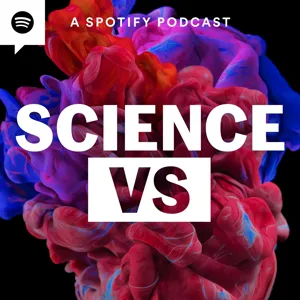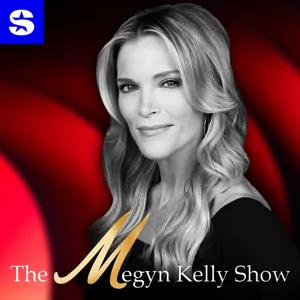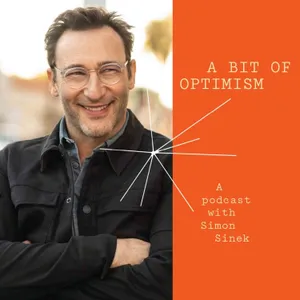Podcast Summary
The mysterious case of Joseph Newton Chandler III: A man's death revealed a 50-year-old identity theft, highlighting the importance of questioning assumptions and considering the unexpected consequences of scientific discoveries.
The world of science is full of fascinating and unexpected discoveries, as shown in the podcast "Ologies" and the mysterious case of Joseph Newton Chandler III. In the podcast, host Ally Ward explores various scientific fields, from etymology to neuroparasitology. Meanwhile, in the real world, the widespread use of DNA tests has created a massive DNA family tree, leading to unintended consequences such as the case of a man who lived under a stolen identity for decades. In this story, a man named Joseph Newton Chandler III was found dead in 2002, and from the evidence, it appeared that he had lived a lonely life and taken his own life. However, when the police searched for his relatives, they discovered that he had already been dead for over 50 years. US Marshal Peter Elliott, who was investigating the case, became suspicious and set out to uncover the truth about the mysterious dead man. The case highlights the importance of questioning assumptions and the unexpected consequences that can arise from new scientific discoveries. Listen to Science Versus from Gimlet Media for the full story.
The lack of concrete evidence makes it challenging for law enforcement to solve crimes: Continued advancements in technology and methods are crucial for solving cold cases despite the absence of concrete evidence
The lack of concrete evidence, such as DNA or fingerprints, can make it difficult for law enforcement to solve crimes. In the case discussed, a man lived under a stolen identity for over 20 years, leaving the police with few leads. He led a secretive life, paying in cash and avoiding relationships outside of work. When he was eventually found dead, his medical records revealed a suspicious injury, but the origins were unclear. The case went cold until a new cold case unit reviewed it and discovered a tissue sample from a hospital where the man had been treated for cancer. Despite the DNA not matching any known criminals, advances in technology now allow for the creation of a network of potential relatives, which could eventually lead to the identification of the mystery man. This case highlights the importance of continued advancements in technology and methods for solving cold cases.
Revolutionizing Unsolved Mysteries with Genealogy and DNA Testing: Amateur genealogists use advanced techniques and DNA testing to help solve unsolved mysteries, with GEDmatch providing access to a vast database for finding potential relatives.
The combination of advanced genealogy techniques and accessible DNA testing is revolutionizing the way unsolved mysteries are approached. Amateur genealogists, like Margaret Press, are teaming up with law enforcement to use their skills and resources to solve cases that have stumped professionals. GEDmatch, a unique genealogy website, allows users to upload their DNA results from other testing sites, providing access to a vast database for finding potential relatives. This has led to breakthroughs in cases where traditional methods have failed. For instance, the team of volunteers was able to use this method to identify a long-dead man, Joseph Newton Chandler, by finding distant relatives in his DNA. This not only brought closure to the case but also highlighted the importance of utilizing the power of technology and community in solving mysteries.
Unraveling a Decades-Old Identity Mystery with Genealogy: A team of genealogists used DNA and extensive research to reveal a man's true identity after decades of living under a stolen one, highlighting the power of crowdsourcing and genealogy in solving complex identity mysteries.
A team of armchair genealogists were able to unravel the identity of a man who had lived under a stolen identity for decades, using DNA and extensive genealogical research. They started with a few distant cousins of the mystery man and built a vast interconnected family tree, which eventually led them to the dead man they were looking for. The process involved finding the first common relative connecting the fake identity to the distant cousin, and then filling out the branches with more and more relatives using various records. After months of painstaking work, they discovered that the mystery man was actually Robert Ivan Nichols, and that he had been hiding from an unknown past. This case demonstrates the power of crowdsourcing and genealogical research in solving complex identity mysteries.
Genealogists uncover man's true identity after 20 years of living under a false name: A team of genealogists identified a man using a deceased boy's identity, leading to the solution of a long-standing cold case.
A team of genealogists, led by Colleen Fitzpatrick, made a groundbreaking discovery by uncovering the true identity of a man who had been living under a false name for over 20 years. The man, identified as Robert Ivan Nichols, had been using a deceased boy's identity, and the team found this connection by noticing a consistent address in both Nichols' and Joseph Newton Chandler's (the deceased boy's identity) records. This discovery was significant because it helped US Marshal Pete Elliott solve a long-standing cold case. The team's work not only identified Nichols but also uncovered photos, addresses, and other information about him. This discovery was a major breakthrough in the case, but the question of why Nichols had assumed this identity and what he was running from remained unanswered. The team's work opened up new avenues of investigation for Pete, providing crucial information to help solve the rest of the case. The use of genealogy and public records to solve crimes is a powerful tool, as demonstrated by this case and the subsequent capture of the Golden State Killer.
Unexpected family connections help solve a mystery: Surprising encounters with family members and their shared memories can provide valuable insights and lead to solving long-standing mysteries.
The element of surprise and family connections were crucial in solving a decades-old mystery. Pete, a detective, drove unannounced to meet Robert Ivan Nichols' son, believing he could provide valuable information. When they met, the resemblance was striking, leaving no doubt they were related. Later, federal agents visited Phil, asking about his father. Phil described his dad as an intelligent and quiet man, with a methodical engineering brain. He shared a memorable childhood experience where his father, who was usually reserved, grabbed a big chunk of cake on Phil's birthday. This outburst was unusual for Robert, who was typically quiet and difficult to get close to. Phil speculated that his father's experience in World War 2, which involved the loss of many lives around him, may have contributed to his reserved demeanor. The combination of surprise encounters and family connections ultimately led to new leads and progress in the case.
A veteran's mysterious disappearance and new identity: A Purple Heart recipient, Robert Nichols, disappeared after a troubled marriage, leaving only a cryptic clue. Decades later, he reappeared as Joseph Newton Chandler, raising suspicions of involvement in the Zodiac Killings.
Robert Nichols, a military veteran, led a mysterious life after returning from the war. He was injured during battle and received the Purple Heart, but the trauma seemed to have lasting effects on his life. His relationship with his wife eventually broke down, leading to a divorce in the early 1960s. Robert then disappeared, leaving behind only a cryptic penny as a clue to his whereabouts. Decades later, he resurfaced under a new identity, Joseph Newton Chandler, raising suspicions of criminal activity. While it's unclear why Robert chose to steal a new identity, some theories suggest that he may have been connected to the Zodiac Killings in California during the 1960s. Despite extensive investigations, the true reason for Robert's actions remains a mystery.
Robert Ivan Nichols: A Possible Suspect in the Zodiac Killings: The use of genealogy sites in crime solving has led to potential suspects in the Zodiac killings, including Robert Ivan Nichols, but definitive evidence is still lacking.
The case of Robert Ivan Nichols being a suspect in the Zodiac killings raises intriguing possibilities but remains unproven. The similarities between Nichols and the police sketch of the Zodiac Killer, along with his military background and time in California, make him a compelling suspect. However, no definitive evidence has been presented, and the investigation is ongoing. The use of genealogy sites in crime solving has proven successful in recent times, leading to the identification of new suspects in over 20 violent crimes. For Nichols' son, Phil, the revelation of his father's potential involvement in the Zodiac killings was a shock, but he has come to terms with it through his own struggles with addiction. The case serves as a reminder of the complexities and uncertainties that come with investigating crimes, even as technology continues to provide new tools for solving them.
A personal story of transformation and the power of choice: Unexpected challenges and opportunities can lead to personal growth and the discovery of new interests, like essential oils or true crime podcasts.
Life can present us with unexpected challenges and opportunities, and it's up to us to decide how to respond. In the podcast episode of "Science Versus," the topic of essential oils was discussed, but the speaker shared a personal story about a life-or-death situation and his decision to become a father instead of a mother. This experience showed him that he could be anything he wanted to be. The podcast also recommended the show "Criminal" as a fascinating listen for those who enjoy true crime stories. The episode featured a Texas woman who solved the murder of her college roommate and explored various criminal stories, some of which were funny and some intense. The production of "Science Versus" was a collaborative effort involving many people, including producers, editors, fact-checkers, and recording assistants. Special thanks were given to those who helped with the episode, including Dr. Colleen Fitzpatrick at the DNA Doe Project and Curtis Rogers at GEDmatch. Overall, the podcast episode provided an interesting and thought-provoking discussion on essential oils, but the personal story and recommendation of "Criminal" served as a reminder that life can surprise us and that we have the power to make choices that shape our experiences.






